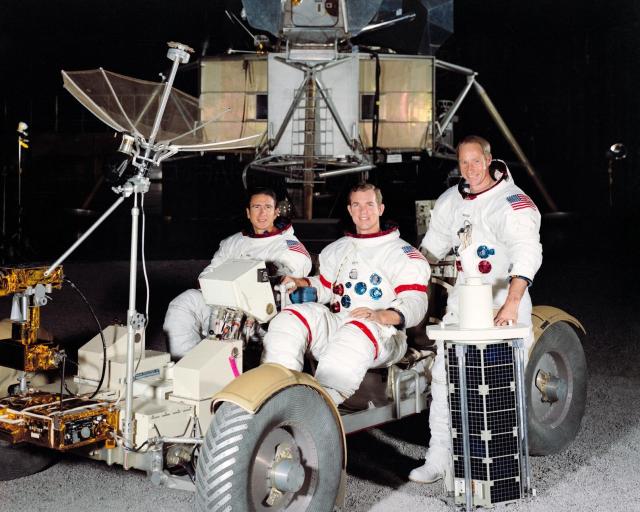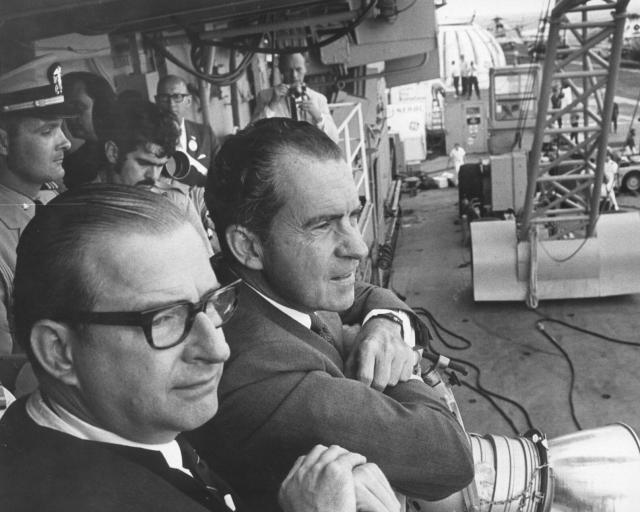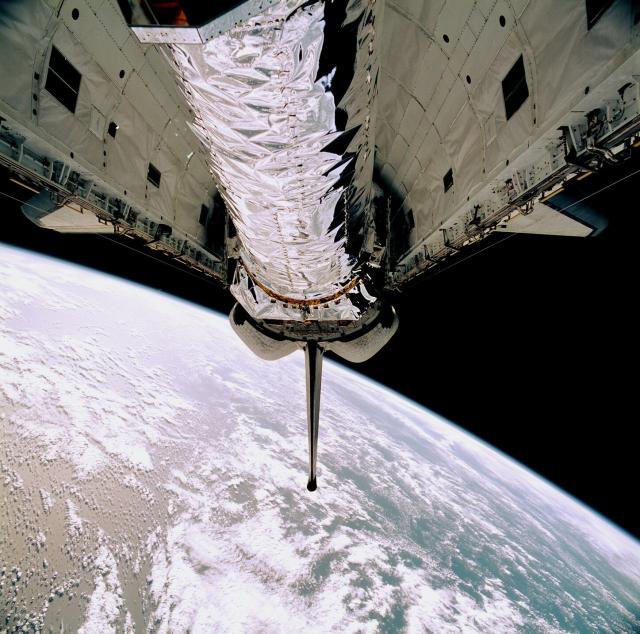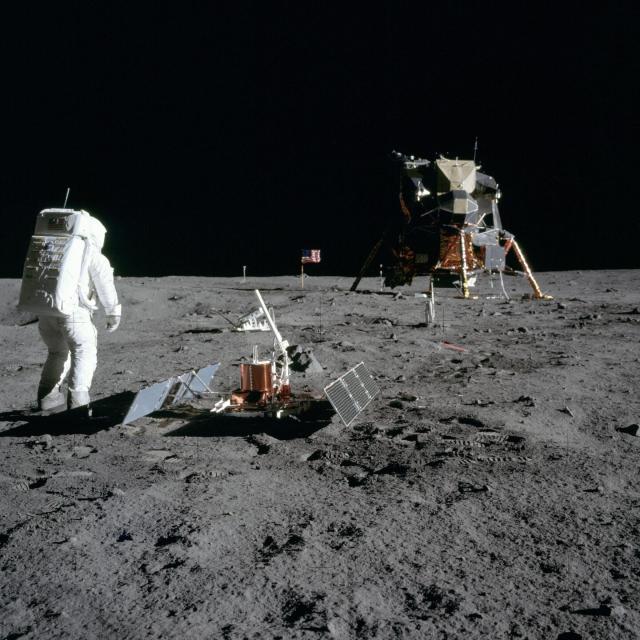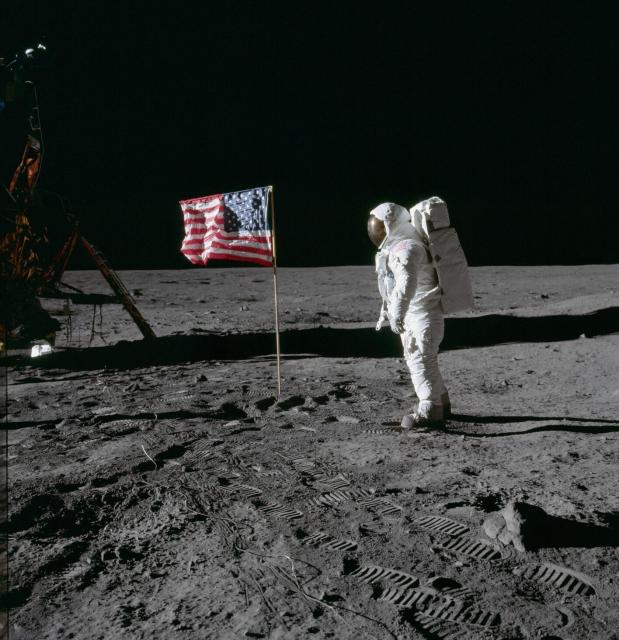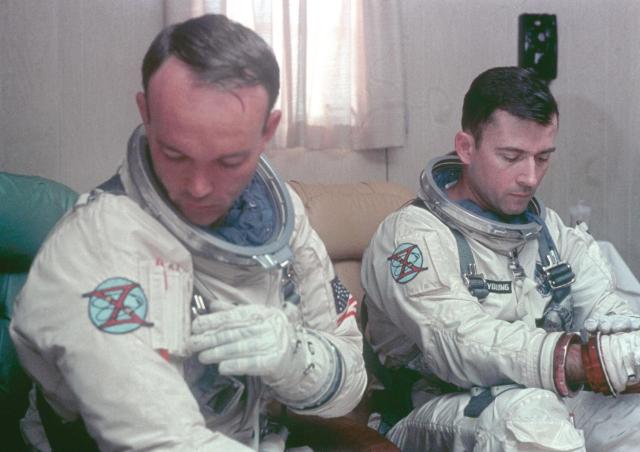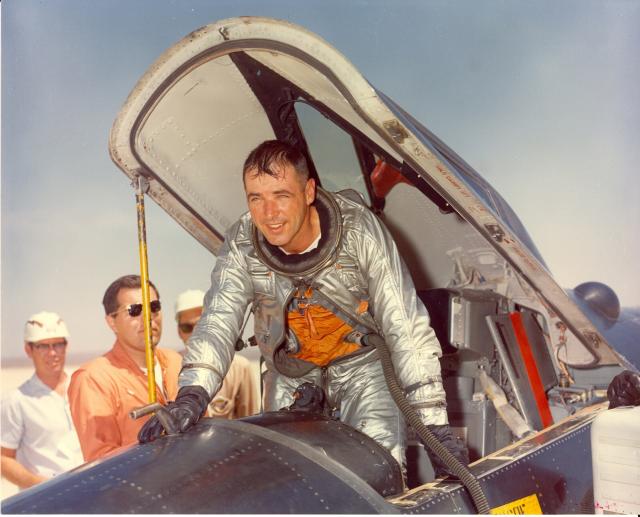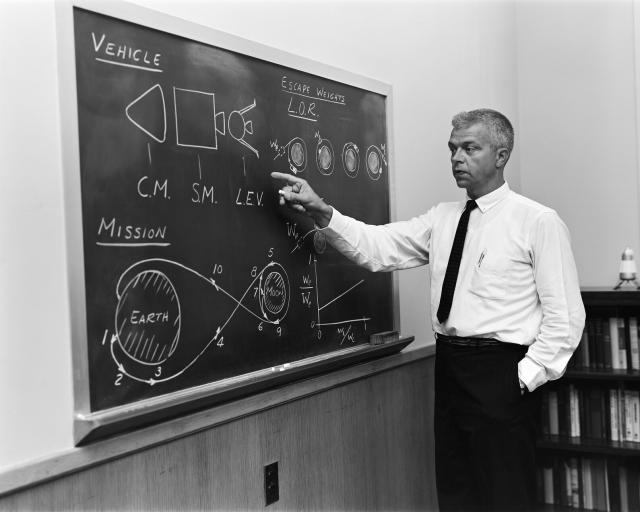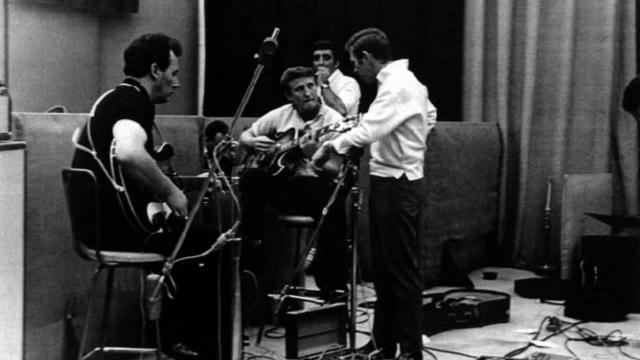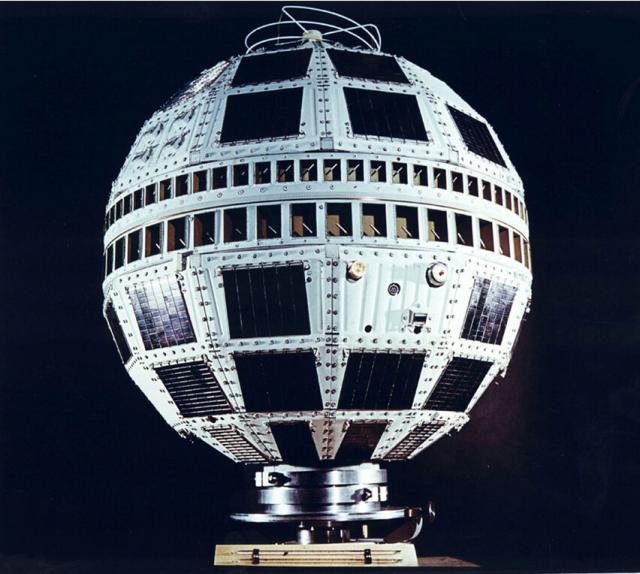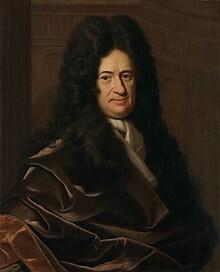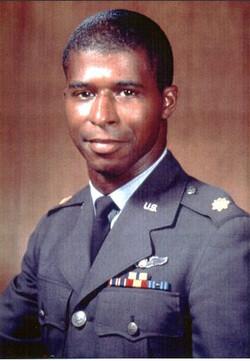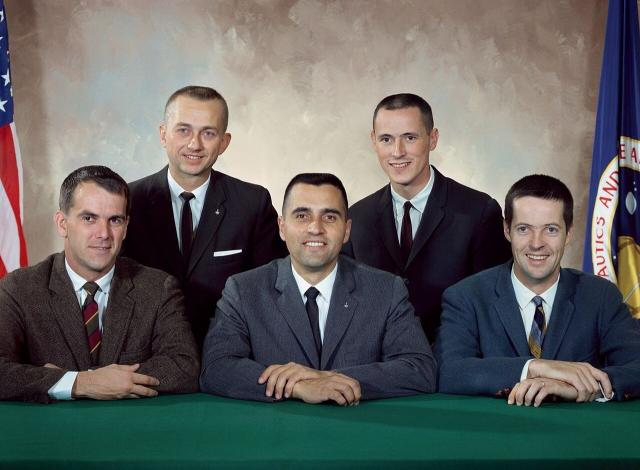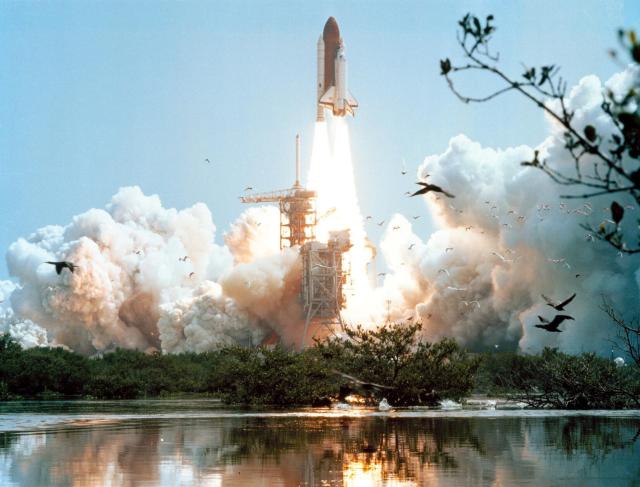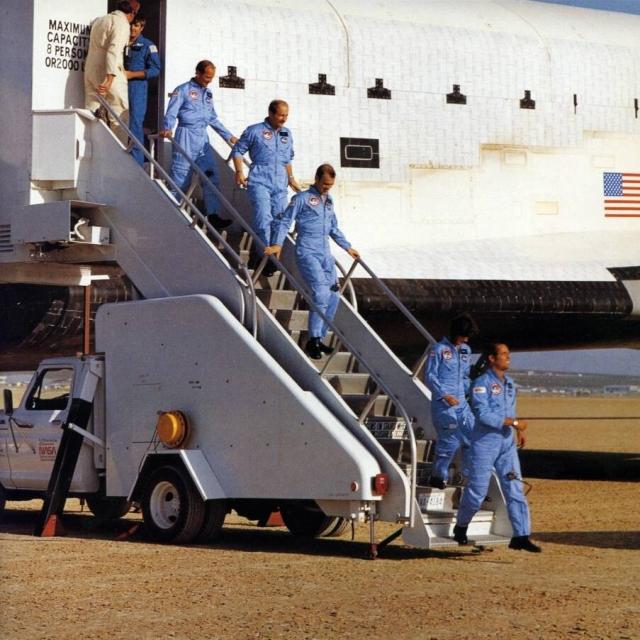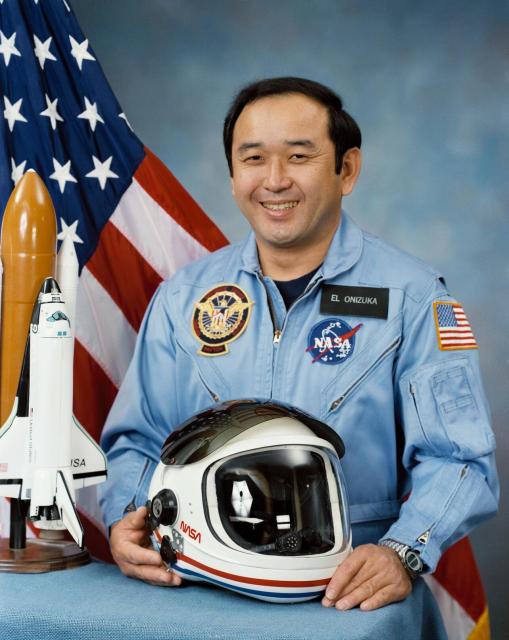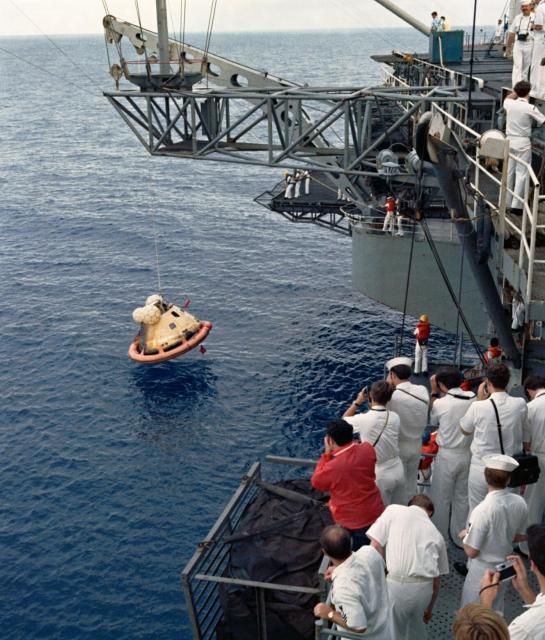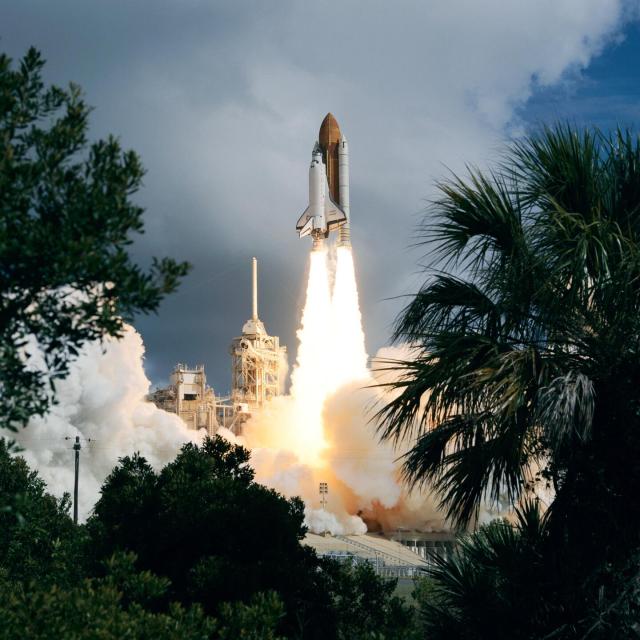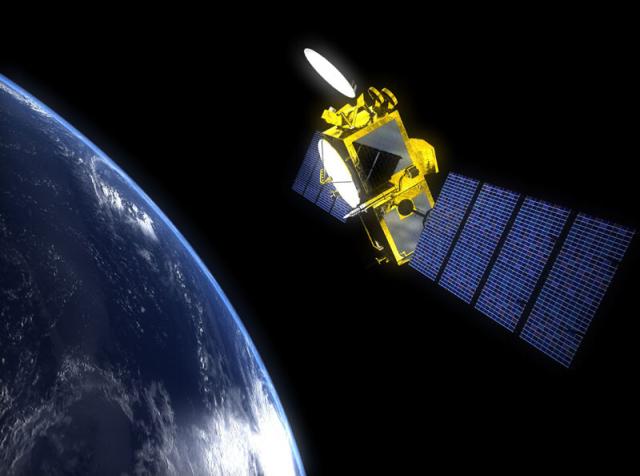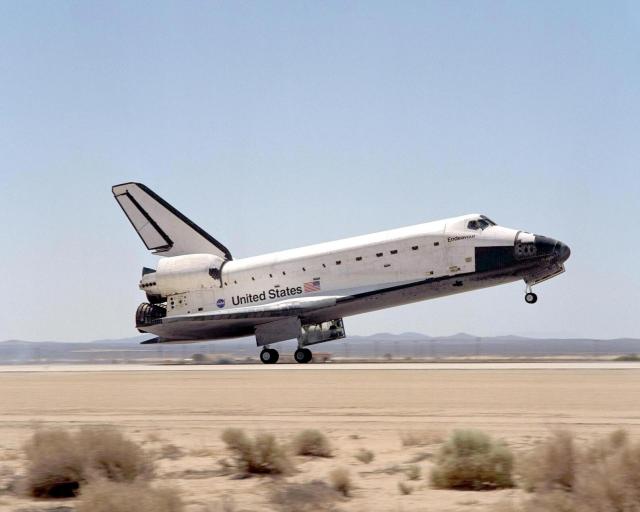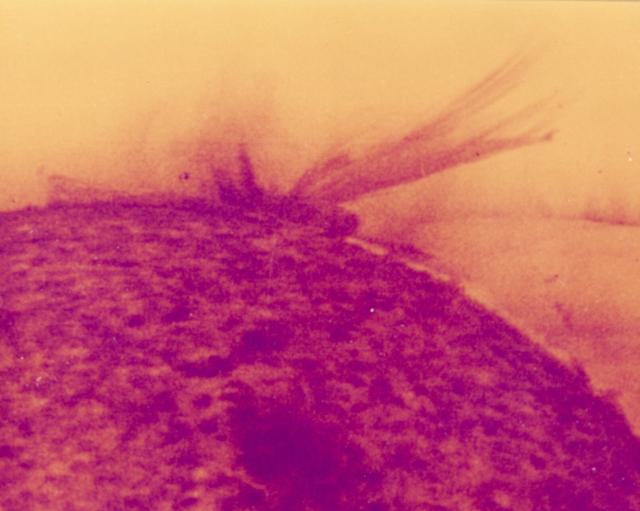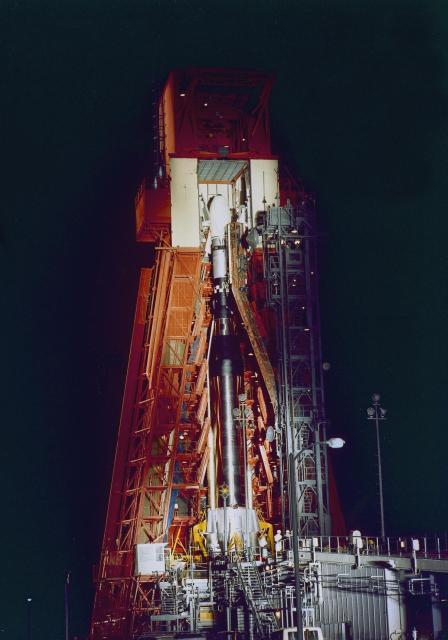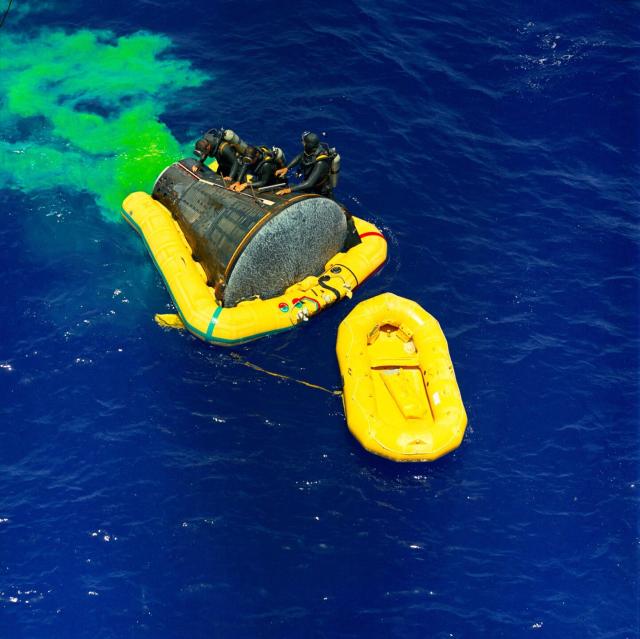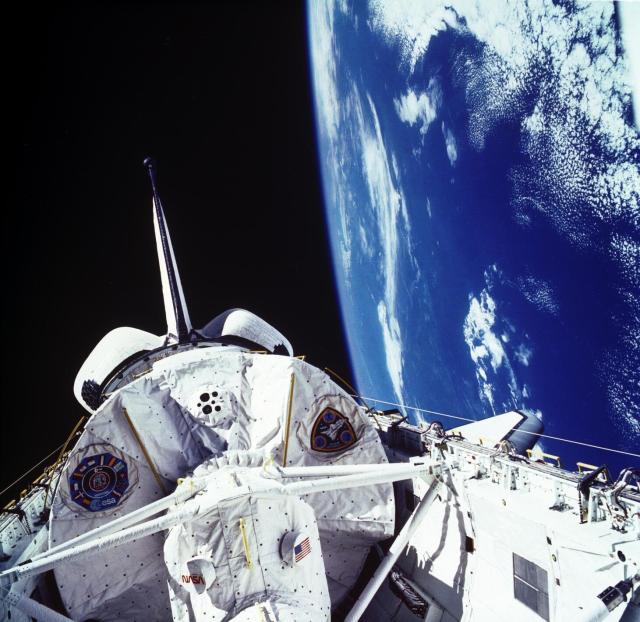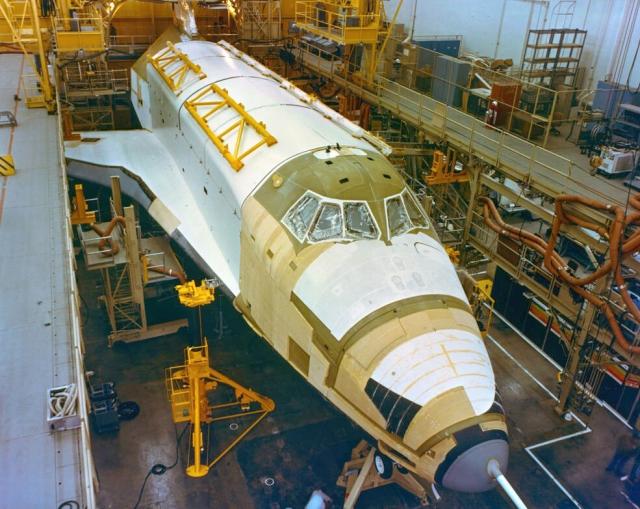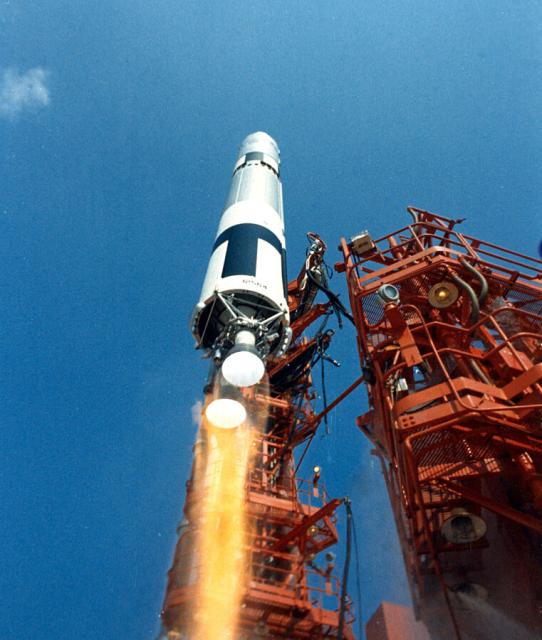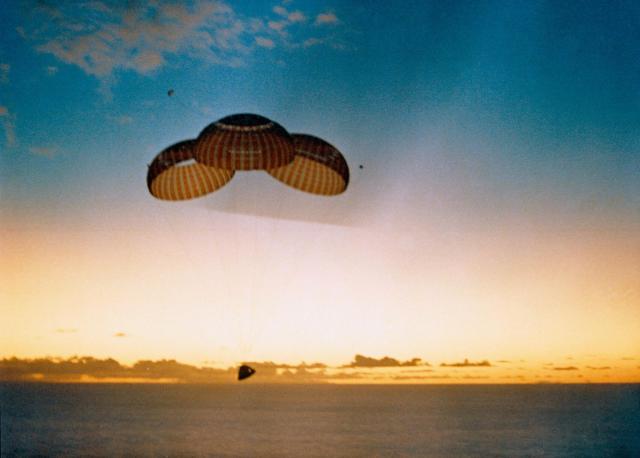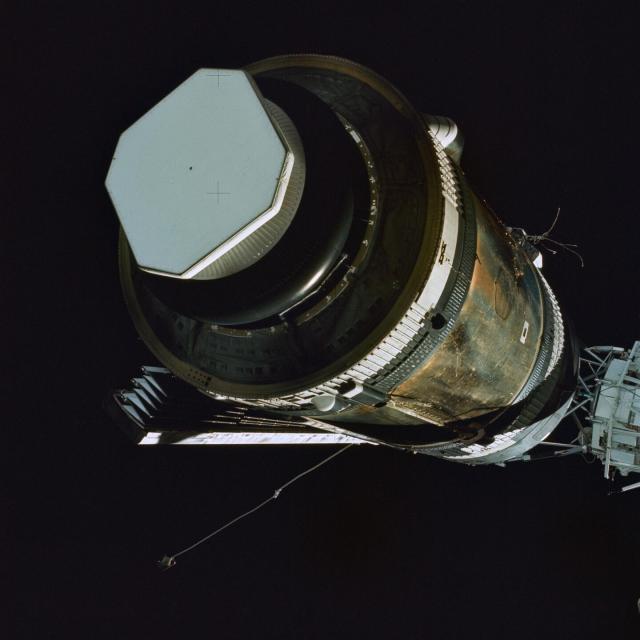Search
Items tagged with: OtD
Incredible journeys are better with your bestie
#OTD in 2020, the @NASAPersevere rover and Ingenuity helicopter began their adventure to Mars, lifting off from Cape Canaveral at 7:50 AM ET.
More on Perseverance: go.nasa.gov/3DN8xzT
And Ingenuity: go.nasa.gov/3O5R0HD
#NASAhistory
Mars 2020 Perseverance Rover - NASA
NASA's Mars 2020 Perseverance rover will look for signs of past microbial life, cache rock and soil samples, and prepare for future human exploration.go.nasa.gov
Taken #OTD in 2006, this Hubble shot shows a rare eclipse on Uranus!
The shadow of one of the planets' icy moons, Ariel, is seen on the surface. Ariel is the tiny white dot near the center of the planet.
Find out more about this astronomical alignment: go.nasa.gov/43DulbD
#Hubble
Get in Irwin, we're going Moon driving!
Apollo 15, the 4th mission to put humans on the Moon, launched #OTD in 1971. Folded up in the lunar module (LM) was the first Lunar Roving Vehicle, allowing Dave Scott and Jim Irwin to venture farther from the LM. go.nasa.gov/43FoEKi
#NASAhistory
NASA Administrator Dr. Thomas Paine (left) and U.S. President Richard M. Nixon wait aboard the U.S.S. Hornet recovery ship for the splashdown of the Apollo 11 command module #OTD in 1969.
Read more about Apollo 11's return to Earth: go.nasa.gov/3OghnvV
#NASAhistory
Happy 24th birthday @chandraxray! Seen here just before being deployed from Space Shuttle Columbia (STS-93) #OTD in 1999, this powerful space observatory was initially expected to function for 5 years.
Read how Chandra has vastly advanced X-ray astronomy: go.nasa.gov/3OfPXWV
#NASAhistory
Chandra X-ray Observatory
NASA.gov brings you the latest images, videos and news from America's space agency. Get the latest updates on NASA missions, watch NASA TV live, and learn about our quest to reveal the unknown and benefit all humankind.NASA
Happy #InternationalMoonDay!
#OTD 54 years ago, the Apollo 11 crew became the first humans to set foot on the lunar surface.
With #Artemis, we will build on Apollo to establish long-term human infrastructure on the Moon.
#NASAArtemis #Artemis
"That's one small step for [a] man, one giant leap for mankind."
Neil Armstrong's famous words upon stepping onto the Moon's surface were witnessed by 650 million people from around the globe #OTD in 1969. Watch ▶️ go.nasa.gov/46UfwEf
Do you have recollections of this day?
#NASAhistory
Apollo 11: One Small Step on the Moon for All Mankind
Neil Armstrong and Buzz Aldrin spent more than two hours outside their spacecraft on the Moon. They studied the surface. They collected rocks. After almost a...YouTube
#OTD in 1966, John Young and Michael Collins launched for the 3-day Gemini X mission. The astronauts rendezvoused with 2 Agena target vehicles, set a record altitude for humans in space, and performed a spacewalk from one spacecraft to another.
Read more go.nasa.gov/3OggYtp
#NASAhistory
Major General Robert White earned his astronaut wings in the X-15 when he reached 95.9 km (59.6 mi) in altitude #OTD in 1962, setting a world record.
Oh, and he was also the first pilot to fly to Mach 4, 5 & 6 #avgeeks #aviation @NASAaero
go.nasa.gov/3PLZB4T
📷 @usairforce
#NASAhistory
X-15 Pilot Major Robert M. White
Major Robert M. White is seen here next to the X-15 aircraft after a research flight.Yvonne Gibbs (NASA)
#OTD in 2011, NASA's Dawn spacecraft entered Vesta's orbit, studying the asteroid's geology and composition. Dawn revealed that Vesta is actually a protoplanet surviving from the earliest days of the solar system!
Learn more about the Dawn mission: go.nasa.gov/3NSTKrM
#NASAhistory
Overview | Dawn – NASA Solar System Exploration
Dawn was the first mission to orbit a dwarf planet and the first two orbit two bodies in the main asteroid belt.NASA Solar System Exploration
Fueling up for an epic day in spaceflight history 🥩 🍳
Apollo 11 astronauts Neil Armstrong, Michael Collins and Buzz Aldrin were joined by Bill Anders (left) and Deke Slayton (right) for the traditional pre-flight breakfast of steak and eggs hours before liftoff #OTD in 1969.
#NASAhistory
#NASAhistory
#ISS
On This Day in 2011: Final Hook-Up
Space Shuttle Atlantis approached the International Space Station for docking for the last time.go.nasa.gov
The Day Communication Went Global 🌍
Telstar 1, the world's first active communication satellite, was launched by NASA #OTD in 1962. Almost two weeks later, it relayed the first live transatlantic TV broadcast.
Watch 1962 news footage: go.nasa.gov/3reJfrh
📷 @BellLabs
#NASAhistory
Telstar at 50
On July 12, 1962, Telstar broadcast the world's first transatlantic television transmission.NASA
"Music is a hidden arithmetic exercise of the soul, which does not know that it is counting."
Gottfried Wilhelm Leibniz was born #OTD in 1646. He was a mathematician, philosopher, scientist and diplomat. He is a prominent figure in both the history of philosophy and the history of mathematics. He wrote works on philosophy, theology, ethics, politics, law, history and philology. via @Wikipedia
Books by Gottfried Wilhelm Leibniz at PG:
gutenberg.org/ebooks/author/71…
#books #philosophy #mathematics
Books by Leibniz, Gottfried Wilhelm, Freiherr von (sorted by popularity)
Project Gutenberg offers 71,002 free eBooks for Kindle, iPad, Nook, Android, and iPhone.Project Gutenberg
#OTD in 1967, Robert H. Lawrence was chosen for the MOL program: the first African-American selected as an astronaut for a U.S. space program. Tragically, he was killed in an accident before going to space.
More about Lawrence's legacy: go.nasa.gov/3NPi6nJ
📸 @usairforce
#NASAhistory
Robert Lawrence: First African-American Astronaut
The USAF selected Maj. Robert H. Lawrence, Jr., on June 30, 1967, as the first African-American astronaut by any national space program.NASA
#OTD in 1965, NASA formally announced its first class of scientist-astronaut candidates ⚛️🔭🩺
1st row: F. Curtis Michel, Harrison Schmitt, Joseph Kerwin. 2nd row: Owen Garriott and Edward Gibson
Read Joe Kerwin's essay about being part of this class: go.nasa.gov/3pydAQV
#NASAhistory
The last Shuttle mission with a crew of two 👨🚀 👨🚀
#OTD in 1982, Apollo 16 astronaut Ken Mattingly and pilot Henry Hartsfield launched on the 4th and final test flight of the Space Shuttle Program, STS-4.
Learn more: go.nasa.gov/431M6AO
#NASAhistory
40 Years Ago: STS-4, Columbia’s Final Orbital Flight Test
Space shuttle Columbia took to the skies on June 27, 1982, to begin its fourth trip into space. Astronauts Thomas K. “TK” Mattingly and Henry W.Kelli Mars (NASA)
"What a way to come to California!" —Bob Crippen, STS-7 Commander
STS-7 touched down at Edwards Air Force Base #OTD in 1983, successfully completing Space Shuttle Challenger's 2nd mission.
More about STS-7, NASA's first space mission to include a woman: go.nasa.gov/3XhpwD4
#NASAhistory
40 Years Ago: STS-7 and the Flight of Sally Ride
On June 18, 1983, space shuttle Challenger lifted off on its second journey to space, the STS-7 mission. Among its five-person crew, Challenger carried the first American woman into space, NASA astronaut Sally K. Ride.Kelli Mars (NASA)
Born in Hawaii #OTD in 1946, Ellison Onizuka served in the @usairforce before making history as the first Asian-American astronaut to reach space. He tragically lost his life on the Space Shuttle Challenger accident in 1986.
More on Onizuka's legacy: go.nasa.gov/3qNE3u1
#NASAhistory
Ellison Onizuka: First Asian American in Space
Ellison Onizuka was the first Asian American to fly in space.Yvette Smith (NASA)
Pete Conrad, Joe Kerwin, and Paul Weitz splashed down in the Pacific Ocean #OTD in 1973, successfully completing the Skylab 2 mission. #Skylab50
The record for longest time spent in space was now 28 days. go.nasa.gov/3NKEZbT
#NASAhistory
Skylab 2 Astronauts Splash Down After Record-Breaking 28-day Mission
Skylab 2 astronauts Commander Charles “Pete” Conrad, Pilot Paul J. Weitz, and Science Pilot Joseph P. Kerwin, completed their record-setting 28-day mission on June 22, 1973, with a splashdown in the Pacific Ocean. Recovery teams from the U.S.S.Kelli Mars (NASA)
With 135 Space Shuttle missions spanning 1981-2011, what makes NASA's 57th special? #OTD 30 years ago, STS-57 launched with the first Spacehab module, providing extra workspace for experiments.
Read more about the mission: go.nasa.gov/3NjJxnT
#NASAhistory
#OTD in 2008, the Ocean Surface Topography Mission/Jason-2 satellite launched to measure changes in sea-level rise. For a decade, it helped display the relationship between ocean circulation and climate change as well as weather forecasts!
Read more: go.nasa.gov/3XbLkQA
#NASAhistory
Cruising into Monday like a boss ✅
Space Shuttle Endeavour (STS-111) made a picture-perfect landing at Edwards Air Force Base in California #OTD in 2002. @NASAArmstrong
More moments from Endeavour's history: go.nasa.gov/3Jgy8US
#NASAhistory
Shuttle Endeavour
NASA brings you images, videos and features from the unique perspective of America's space agency. Get updates on missions, watch NASA TV, read blogs, view the latest discoveries, and more.NASA
The "8 Balls" astronaut class turns 10 today! 🎱
NASA's 21st astronaut class of 8 exceptional men and women, chosen from >6,000 candidates, was announced #OTD in 2013. 2 of them, @Astro_Christina and @AstroVicGlover, have since been selected to fly to the Moon on #Artemis II.
#NASAhistory
The GOES-2 and GOES-3 geosynchronous satellites were launched #OTD in 1977 and 1978, respectively. The GOES program continues today, providing valuable up-to-date information on local weather, forest fires, and volcano activity.
About the GOES program: go.nasa.gov/3PclZE4
#NASAhistory
GOES Overview and History
NASA.gov brings you the latest images, videos and news from America's space agency. Get the latest updates on NASA missions, watch NASA TV live, and learn about our quest to reveal the unknown and benefit all humankind.NASA
#OTD in 1973, the Skylab 2 crew made their first observations of a solar flare, recording the long-awaited event with unprecedented detail! #Skylab50
Want to learn more about Skylab's solar observations? We have a book on that! go.nasa.gov/4675SO2
#NASAhistory
#OTD in 1967, Mariner V launched to Venus on a flyby mission to learn about the planet's atmosphere.
With an atmospheric pressure more than 90 times Earth's and a temperature of 527 °C, we learned Venus wasn't so similar to Earth after all!
Read: go.nasa.gov/43x5uXy
#NASAhistory
55 Years Ago: Mariner 5 Explores Venus
In 1967, as NASA continued preparations for the first human landing on the Moon, the agency once again turned its attention toward exploring Venus.Kelli Mars (NASA)
Hubble's spectacular image of Eta Carinae was released #OTD in 1996!
Explore this fascinating star's history with @nasa astronomer Dr. Keith Noll.
Find out more: go.nasa.gov/3Ck6cLV
#Hubble
Gemini IV, crewed by @NASA_Astronauts Jim McDivitt and Ed White, splashed down in the Atlantic Ocean #OTD in 1965 after a successful 4-day mission including the first ever American spacewalk.
More about Gemini IV: go.nasa.gov/3quLq9O
#NASAhistory
Gemini IV: Learning to Walk in Space
During Gemini IV, two astronauts not only stayed in orbit four days, one performed America's first spacewalk.NASA
#OTD in 1973, astronauts Pete Conrad and Joe Kerwin were finally able to free the jammed solar array during a challenging 3 hour and 25 minute spacewalk.
Skylab's power source was restored and the crew could get back to doing science! go.nasa.gov/3NbuWME
#NASAhistory
Skylab 2: First Repair Spacewalk
Skylab, America’s first space station, launched on May 14, 1973, and immediately ran into serious trouble.NASA
Space Life Science-1 (SLS-1), launched on Space Shuttle Columbia (STS-40) #OTD in 1991, was the first Spacelab mission dedicated to life sciences research AND the first NASA mission to have 3 women on board.
Research took place in a module, shown here, in Columbia's cargo bay.
#NASAhistory
When construction of NASA's first Space Shuttle began #OTD in 1974, its name hadn't yet been chosen. First called the Constitution, it was later named Enterprise after the fictional ship in #StarTrek! 🖖
Learn about Enterprise and its naming process: go.nasa.gov/3oGdbM2
#NASAhistory
Astronauts Tom Stafford and Gene Cernan blasted off in the Gemini 9A spacecraft #OTD in 1966 for a 3-day mission to practice docking with a target vehicle and test a new propulsion system on a spacewalk.
Things didn't go quite as planned ➡️ go.nasa.gov/3C4csqY
#NASAhistory
"This is the greatest experience, it's just tremendous."
#OTD in 1965, Gemini IV astronaut Ed White became the first American to perform a spacewalk, floating for 23 minutes while attached to the spacecraft.
Read about his spacewalk: go.nasa.gov/3CpeSAR
📷 by Jim McDivitt
#NASAhistory
Gemini IV: Learning to Walk in Space
During Gemini IV, two astronauts not only stayed in orbit four days, one performed America's first spacewalk.NASA
#OTD in 1971, Mariner 9 was launched. Nearly 6 months later, it became the first spacecraft to orbit another planet, beating the Soviets' Mars 2 🛰️
Mariner 9 transmitted 7,329 photos of Mars back to Earth, including this one of Ascraeus Mons volcano. go.nasa.gov/3MJeUrK
#NASAhistory
In Depth | Mariner 09 – NASA Solar System Exploration
NASA’s real-time science encyclopedia of deep space exploration. Our scientists and far-ranging robots explore the wild frontiers of our solar system.NASA Solar System Exploration
The Apollo 10 astronauts splashed down in the Pacific Ocean just as the Sun was rising #OTD in 1969. 🌅
Stafford, Young, and Cernan's successful mission cleared the way for the first humans to land on the Moon a few months later in July. go.nasa.gov/42X2sLZ
#NASAhistory
6 hours after Skylab 2 launched #OTD in 1973, the crew reached Skylab and got its first view of the damage.
The protective shield of the Orbital Workshop was missing, one of the solar arrays was gone, and the other only partially deployed. #Skylab50
🔗 go.nasa.gov/3MGLqvP
#NASAhistory
Skylab 2: “We can fix anything!”
The first installment of this mini-series discussed how Skylab, America’s first space station, ran into serious trouble immediately after launching on May 14, 1973.NASA



